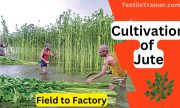Introduction:
This article will provide a brief overview of the scope of higher study available to textile engineer in the USA. Textile engineering encompasses the science, technology, and innovation behind the development and production of textiles. In the United States, textile engineering thrives, offering plenty of opportunities for those passionate about pushing fabric’s boundaries. Innovation, research, and sustainable practices are key components of textile engineering in the USA, which has the potential to revolutionize a variety of industries with fabricated marvels. Textile engineering in the USA goes far beyond traditional textile manufacturing. Textile innovations embrace cutting-edge technologies, interdisciplinary collaborations, and a focus on creating functional, innovative, sustainable, and adaptable textiles to changing societal needs. This field includes advanced materials development, intelligent textiles, wearable technology, and sustainable manufacturing practices. Textile engineering in the USA is driven by innovation. Researchers, scientists, and engineers constantly explore new technologies, seek novel solutions, and push the boundaries. Textile engineers harness nanotechnology, advanced materials science, and additive manufacturing to create fabrics with remarkable properties. In textile engineering, there is no limit to innovation, from textiles that are strong and durable to those that are self-healing. Textile engineering in the USA also involves the development of advanced materials. Textile engineers are creating fabrics with exceptional performance characteristics using nano-fibers, conductive polymers, and composite materials. In addition to being lightweight and flexible, these materials possess unique properties such as high conductivity, thermal regulation, and even sensing capabilities. Textile engineering has expanded into aerospace, automotive, healthcare, and sports due to advances in materials science. Integrating textiles with electronics has led to the exciting field of smart textiles and wearable technology. American textile engineers are at the forefront of this revolution, designing fabrics embedded with sensors, actuators, and electronics. With these smart textiles, vital signs can be monitored, data collected, and seamless environmental interaction can be enabled. Fitness trackers, medical monitoring devices, interactive fashion, and augmented reality apparel are just some of the applications of smart textiles, which have immense potential to improve healthcare, improve sports performance, and revolutionize personal communication.
Textile engineering in the USA places a high priority on sustainability. Textile engineers are developing sustainable manufacturing processes and materials as the textile industry faces increasing pressure to adopt eco-friendly practices. In order to shape a more environmentally conscious industry, textile engineers need to reduce water consumption, implement recycling programs, and explore renewable energy sources. A textile engineer plays a vital role in transitioning to a circular economy, where textiles are designed for longevity, recyclability, and minimal environmental impact.
In the USA, textile engineering involves collaboration between academia, industry, and research institutions. As a result, knowledge exchange, innovation, and practical applications of research findings are fostered. If they work together, researchers and manufacturers can bridge the gap between research and real-world implementation. By developing practical solutions and commercializing innovative textile products, such collaborations expand the scope and impact of textile engineering.

Scope of PhD in Textile Engineering in The USA
The scope of the PhD(Doctorate of Philosophy) in Textile Engineering in the USA is quite promising, with a number of opportunities for research, innovation, and career advancement. By pursuing a PhD in Textile Engineering, you can delve into advanced topics and contribute to the field’s knowledge base.
There are several scope or field aspects of a PhD in Textile Engineering in the USA:
1. Opportunity for research:
PhD programs allow students to conduct in-depth research in various subfields of textile engineering. It includes fiber science, textile chemistry, textile processing, advanced textile structures, smart textiles, and sustainable textiles. This program allows students to explore novel ideas, develop new technologies, and contribute to the advancement of the industry.
2. Networking and collaboration:
It is common for doctoral students to work with industry experts, academic experts, and research institutes. By doing so, interdisciplinary collaborations, knowledge exchanges, and knowledge exposure are fostered. Collaborative projects, internships, and employment opportunities can result from these relationships.
3. Career in academia and industry:
PhDs in Textile Engineering opens doors to academic and industrial careers. Postdoctoral fellows, researchers, and professors can pursue academic positions in universities and research institutions. In addition, textile manufacturing, fashion, healthcare, automotive, aerospace, and sports goods industries offer product innovation, quality control, and management jobs.
4. Advancement in technology:
With advances in nanotechnology, 3D printing, functional coatings, wearable technology, and sustainable textiles, textile engineering is a rapidly evolving field. Applicants for the PhD degree can contribute to these developments by developing new materials and manufacturing processes or examining innovative applications of textile engineering.
5. Innovation and entrepreneurship:
PhD programs emphasize critical thinking, problem-solving, and innovation, which are vital skills for the workplace. In this way, researchers can lead to entrepreneurial ventures, where graduates create their own companies.
6. Government and none-profit organizations:
A PhD in Textile Engineering can also find employment in government agencies, regulatory bodies, and non-profit organizations dealing with textile engineering, sustainability, and policy development. In these positions, researchers, developers, and implementation specialists work to advance the field and meet societal needs.
7. Funding opportunities:
Many universities and research institutions offer financial support to PhD students in Textile Engineering, such as scholarships, grants, and assistantships. With this funding, students can focus on their research without financial worries, which covers tuition expenses and provides a stipend for living expenses.
8. Industry partnership and applied research:
Textile and apparel industries have strong connections with many universities, leading to collaborations and joint research projects. It enables PhD students to apply their research findings in practical settings, contributes to industry advancements, and contribute to innovation.
9. International collaboration:
In Textile Engineering PhD programs, international partners and institutions are often involved. Students can broaden their professional networks by participating in global research projects, attending conferences and workshops abroad, and expanding their professional networks abroad.
10. Sustainability contribution:
The textile industry places a high priority on sustainability. Researchers and developers can contribute to sustainable practices by developing eco-friendly materials, energy-efficient manufacturing processes, waste reduction strategies, and circular economy initiatives with a PhD in Textile Engineering.
Conclusion:
A Ph.D. program should be chosen in light of a prospective student’s specific research interests, long-term career goals, and alignment with faculty expertise. You can gain valuable insights into the scope and opportunities of Textile Engineering in the USA by conducting thorough research, contacting professors, and visiting potential universities. Here I discussed only the scope of where a textile engineer could work.
My next article will be about which university provides this scope of study and how to apply to these universities. Please stay with me and support me by sharing my article with your friends and on social media.







1 thought on “Best 10 Scope of Higher Study for Textile Engineer in the USA”